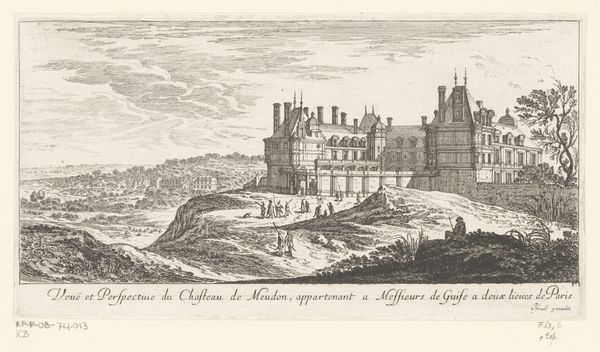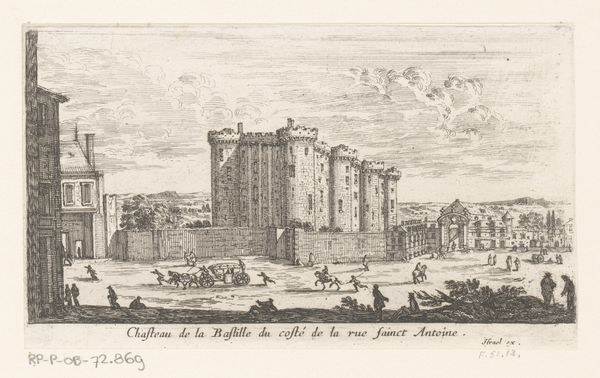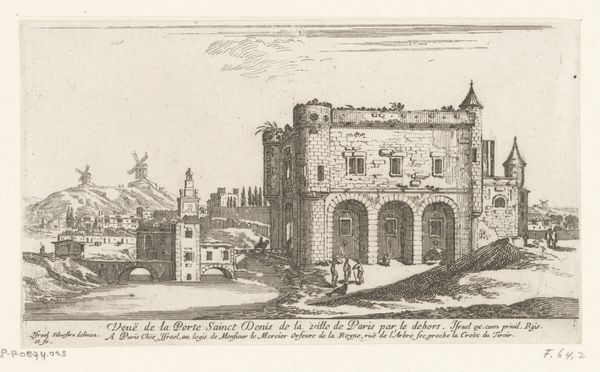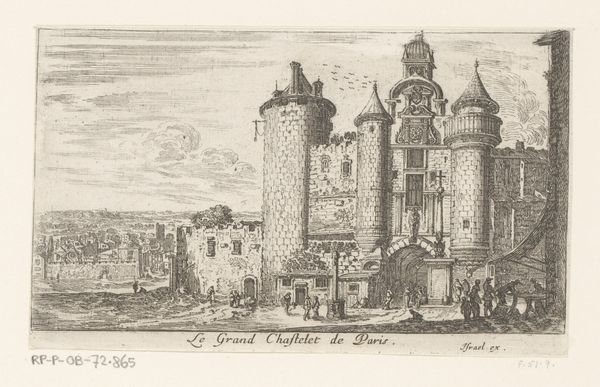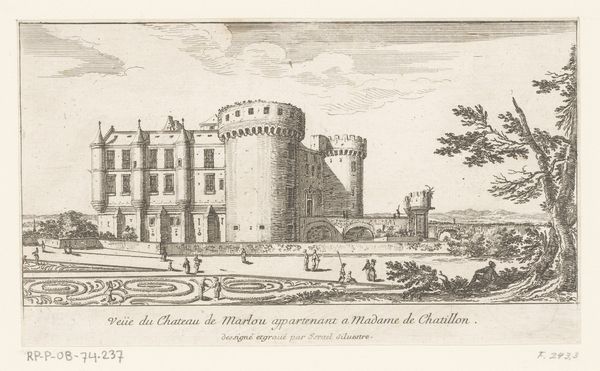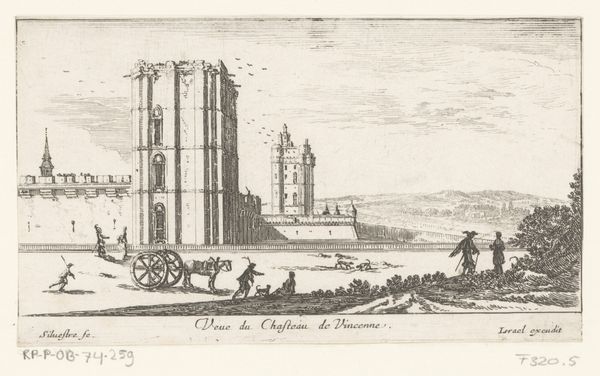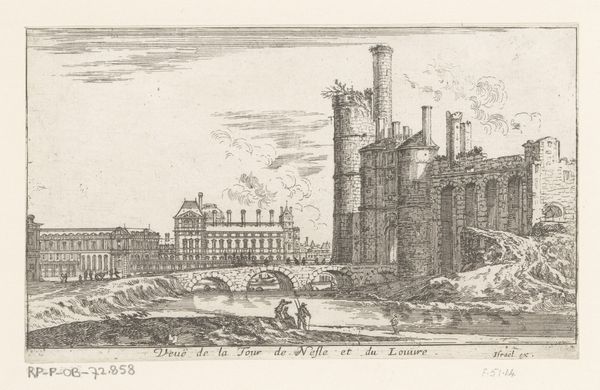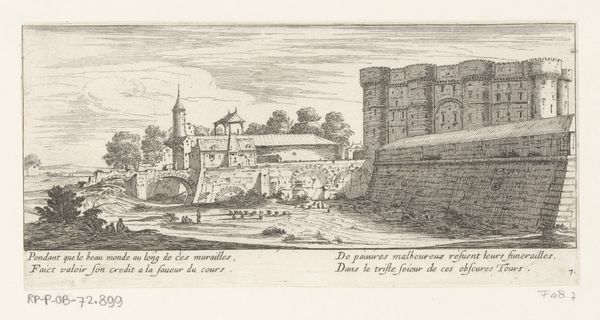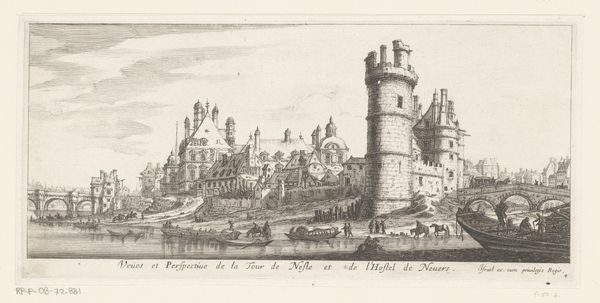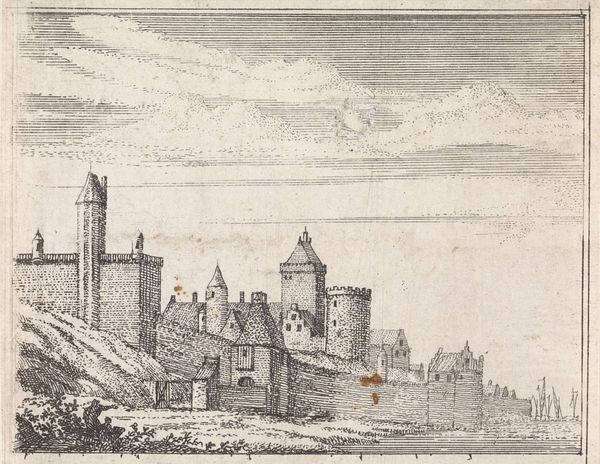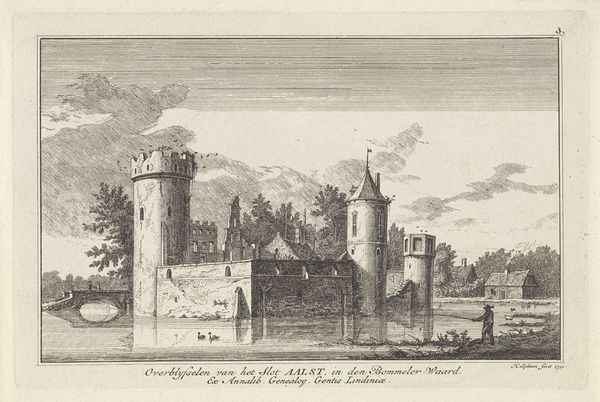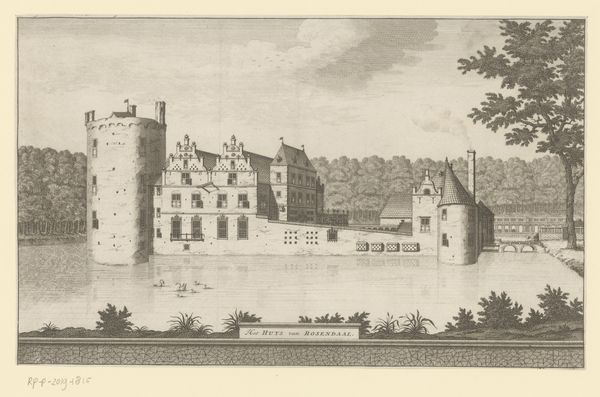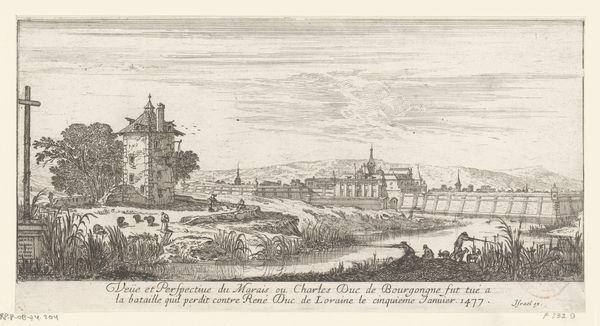
print, engraving, architecture
#
baroque
# print
#
pen sketch
#
old engraving style
#
landscape
#
line
#
cityscape
#
engraving
#
architecture
Dimensions: height 99 mm, width 168 mm
Copyright: Rijks Museum: Open Domain
Editor: So, this is Israel Silvestre's "View of the Louvre," an engraving from 1652. It's quite striking – the stark lines and the almost detached observation of the building make me wonder about its social role at the time. What stands out to you in this piece? Curator: What I see is a document deeply embedded in the politics of its time. Silvestre's depiction of the Louvre isn’t just a representation of architecture; it's a commentary on power, class, and the rapidly changing urban landscape. The print emphasizes the grandiose scale of the building, doesn't it? Consider who that grandeur serves and excludes. Editor: Absolutely, it's hard to miss that contrast! I also wonder, looking at the figures in the foreground, how consciously Silvestre engaged with depicting the working class versus the elite. Or was it all about glorifying the building itself? Curator: That’s precisely where the social critique resides, doesn't it? It's not just about showcasing the building, but subtly exposing the social stratifications inherent in its existence. This period was fraught with tension as power was centralized, changing how resources were used and how space was allocated, reflected even in something as seemingly simple as this cityscape. It is all about who has the privilege of that ‘view’. How might that affect someone’s lived experience, depending on their place in the social hierarchy? Editor: That really gives me a new appreciation for the print. It's not just a pretty picture of a building; it’s about understanding who benefits from its existence, and at whose expense. Curator: Exactly. And in that, we can connect the Silvestre's vision of 17th century Louvre to contemporary struggles about class and privilege today. Understanding this informs not only how we understand the print but our present moment. Editor: I'm definitely walking away with a deeper understanding of how historical context shapes our reading of art. Thanks for sharing your perspective!
Comments
No comments
Be the first to comment and join the conversation on the ultimate creative platform.
